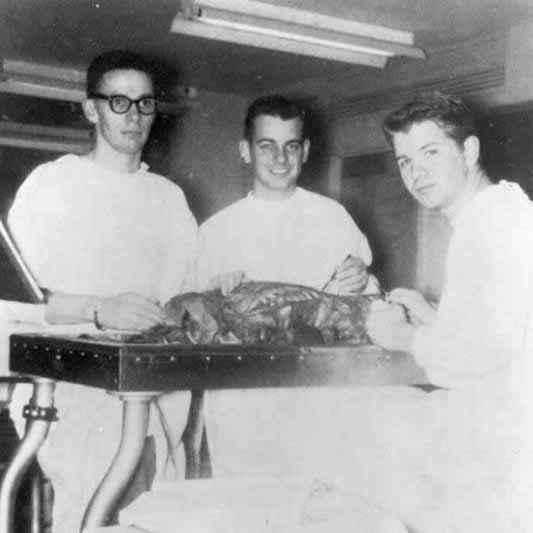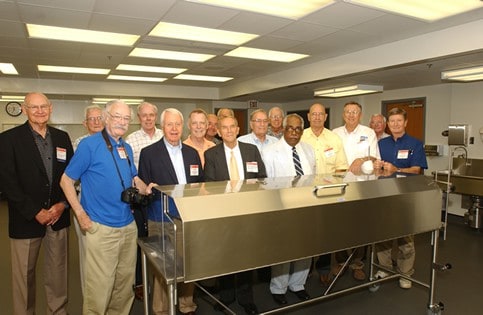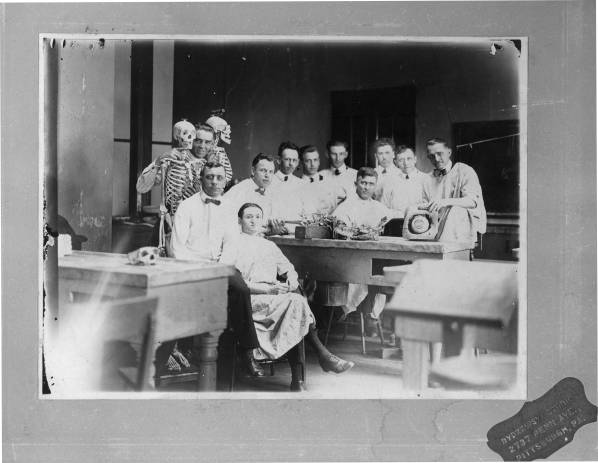
For most students, Gross Anatomy class was the first introduction into the clinical experience of medicine and formed the cornerstone of their medical knowledge in the first and second years of medical school. This rite of passage for medical students was so fundamental that P.O. Hooper, one of eight founders of the school, recognized that without cadavers, there could be no medical school.
When the Medical Department’s first class entered the doors in 1879, the 16 students who matriculated were able to observe real patients treated in the dispensary located at Fones Hardware Store which was adjacent to the building occupied by the department. But their most profound educational experience occurred during L.P. Gibson’s anatomy demonstrations where the entire class gathered around a single cadaver to encounter the human body. This constituted a fundamental change in medical education, placing greater emphasis on learning not only by seeing, but also by doing.
During the early 1900s, it was typical for recent graduates to criticize their instruction and admit that they never performed a dissection while enrolled at school. Administration blamed it in part on the fact that cadavers were difficult to find but recognized that no one should be deprived of an opportunity in the dissecting room.
In the 1930s, cadavers were kept in a cement tank in the basement of Old Statehouse at 300 West Markham (used for pre-clinical education) and were supposedly fished out of the tank with a hook attached to a pole. It was a running joke that some students decided against pursuing medicine beyond that experience. Eventually, students were able to get the hands-on experience in small group dissection.
The gross anatomy laboratory was located in the Education II building and then on the eighth floor of the Education I (Shorey) building before moving to its present location and occupying the entire basement floor of the College of Public Heath building.
These days, gross anatomy is taught at UAMS using a combination of traditional and modern methods. Cadaver dissection is the primary teaching method and the focal point of all teaching activities. On a typical class day, students sit for a 50 minute lecture which is followed by a 2-1/2 hour lab. Computers play a central role in the dissection laboratory and are used to assist students in dissection of the cadaver.



